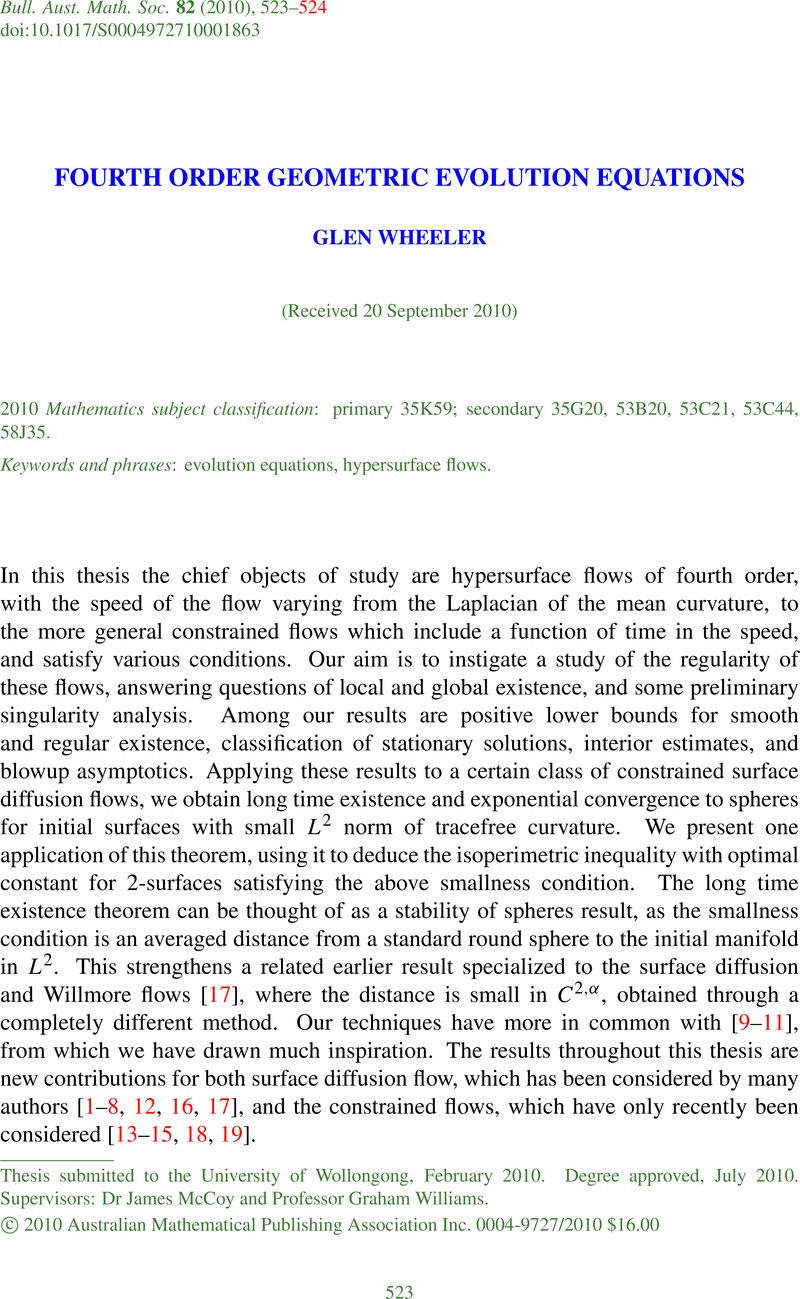Crossref Citations
This article has been cited by the following publications. This list is generated based on data provided by Crossref.
McCoy, James
Wheeler, Glen
and
Williams, Graham
2011.
Lifespan theorem for constrained surface diffusion flows.
Mathematische Zeitschrift,
Vol. 269,
Issue. 1-2,
p.
147.
Wheeler, Glen
2011.
Lifespan Theorem for simple constrained surface diffusion flows.
Journal of Mathematical Analysis and Applications,
Vol. 375,
Issue. 2,
p.
685.
Wheeler, Glen
2012.
Surface diffusion flow near spheres.
Calculus of Variations and Partial Differential Equations,
Vol. 44,
Issue. 1-2,
p.
131.
Liu, Yannan
and
Cao, Linfen
2013.
Lifespan theorem and gap lemma for the globally constrained Willmore flow.
Communications on Pure and Applied Analysis,
Vol. 13,
Issue. 2,
p.
715.


